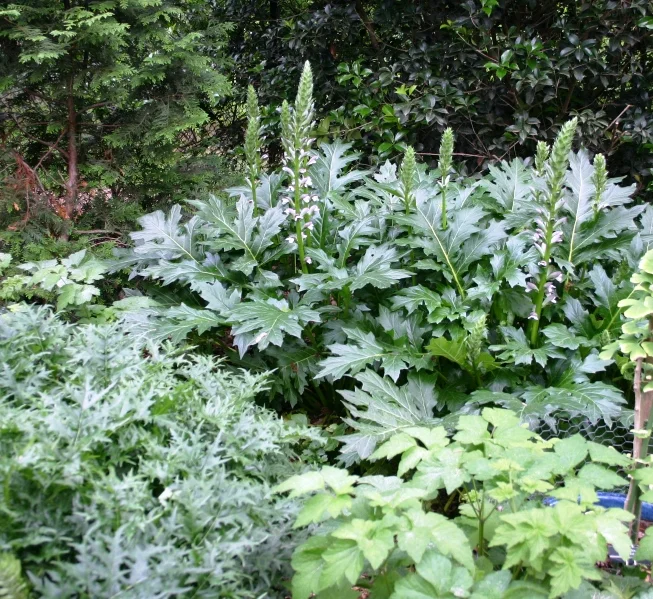Rumex sanguineus (pronounced ROO-meks san-GWIN-ee-us) is known by various common names including Bloody Sorrel, Bloodwort and Red-Veined Dock. It is not eye-catching, but EVERY gardener needs this plant! I reserve exclamation points for the most important points, so pay attention. This plant serves as your personal barometer.
Rumex tells the gardener when containers, window boxes or beds are thirsty. I suggest that you plant one in every mixed container and every garden bed as an irrigation alarm. Just like the Peace Lily in your kitchen window wilts when it is dry but then revives when watered, Rumex wilts horribly when it is too dry. Unless you have ignored its pitiful message for days, a little water will make it perk back up in a few hours.
While it is not a visual standout, the red veined leaves make a terrific addition to containers. The rosette clumps of leaves reach 12-15 inches in height. Rumex has a deep taproot; it ignores heat and humidity and will grow in either sun or shade. When you include this barometer in your plantings, you can stroll past your beds and containers and immediately know which ones need water. They are the ones with the wilted Rumex. If the Rumex looks fine, the bed does not need water. If you have numerous or large gardens, this messenger saves you time.
Rumex also works well as a pond-side plant or near your water garden. It spreads happily in damp areas. It is an evergreen perennial in Zones 6-8, although it may be a little tattered at winter’s end. Use scissors to cut off any damaged leaves, and avoid the red sap because it stains fingers and clothes. I have seen recipes for sorrel soups, but have never tried cooking any of my yard plants although I have chewed on a leaf. The taste was tart but lemony and refreshing – and left me with pink teeth.
Rumex is a reliable soil moisture indicator. Allow it to save you time.
A smart gardener featured Rumex next to a golden-leaf Abelia. The deep red veins of Rumex echoed the red stems of the Abelia, a wonderful combination I observed while on the 2019 Master Gardener tour of private gardens in May.
A tiny Rumex nestled in a basket lets me know when the Lantana need water. The clear filament around the edges is fishing line used to secure the cocoa basket to the metal frame. Sweetgum balls discourage cats from sleeping amid the flowers.





